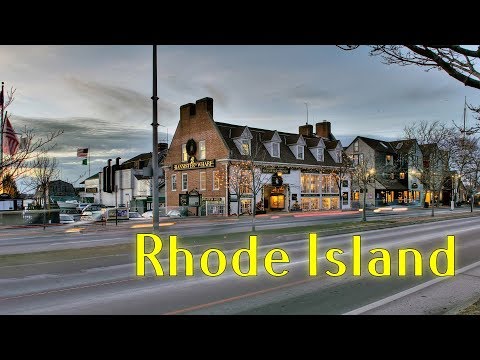Introduction to Rhode Island’s Size
Rhode Island, located in the New England region of the United States, is often referred to as the tiniest state in the country. Despite its small size, Rhode Island holds an important place in American history and culture. This article will explore the various aspects of Rhode Island’s size and its significance.
Defining the Concept of "Tiny" in Statehood
When discussing the size of a state, it is crucial to define what constitutes a "tiny" state. While size can be determined by various factors, land area is the most commonly used metric. In terms of land area, Rhode Island is indeed the smallest state in the United States. However, it is important to consider other aspects such as population density and economic factors to gain a comprehensive understanding of a state’s size.
Measuring Rhode Island’s Land Area
Rhode Island covers an area of approximately 1,214 square miles, making it the smallest state in terms of land area. To put it into perspective, Rhode Island is about 48 miles long and 37 miles wide. Despite its small size, Rhode Island boasts a diverse geographical landscape, including beautiful coastlines, rolling hills, and urban centers.
Comparative Analysis with Other U.S. States
When comparing Rhode Island’s land area with other U.S. states, the difference becomes evident. For instance, Alaska, the largest state, spans an astonishing 663,300 square miles, more than 500 times the size of Rhode Island. Other larger states, such as Texas and California, also dwarf Rhode Island in terms of land area.
Rhode Island’s Ranking in State Sizes
Based on land area, Rhode Island ranks 50th out of the 50 states. While its small size is a well-known fact, Rhode Island’s unique position as the tiniest state sets it apart from the rest of the country.
Factors Contributing to Rhode Island’s Small Size
Several factors have contributed to Rhode Island’s small size. One significant factor is its historical development, including its establishment as a colony in the 17th century. The state’s early boundaries were determined by various political and geographical factors, resulting in its compact size. Additionally, the state’s location on the Northeast coast limited its potential for expansion.
Historical Development of Rhode Island’s Boundary
Rhode Island’s boundary has evolved throughout its history. Initially, the state included areas that are now part of neighboring Massachusetts and Connecticut. Over time, boundary disputes and settlements led to Rhode Island’s current shape and size. The state’s boundary reflects a combination of historical events, political negotiations, and natural landmarks.
Population Density in Rhode Island
Due to its small land area and relatively high population, Rhode Island has one of the highest population densities in the United States. With a population of over 1 million people, the state experiences a concentration of residents in its urban centers. This high population density has implications for infrastructure, public services, and community development.
Economic Implications of Rhode Island’s Size
Rhode Island’s small size has both advantages and challenges when it comes to the state’s economy. On one hand, the compact nature of the state allows for efficient transportation and easy access to various amenities. On the other hand, limited land area poses challenges for economic growth and diversification. Rhode Island’s economy primarily relies on sectors such as healthcare, education, tourism, and manufacturing.
Challenges and Advantages of Being a Small State
Being a small state presents both challenges and advantages. One challenge is the limited availability of resources, including land for development. Additionally, a small state may face difficulties in attracting large corporations or industries. However, Rhode Island’s small size provides advantages such as a tight-knit community, ease of navigation, and a strong sense of identity and pride.
Cultural Significance of Rhode Island’s Size
Rhode Island’s small size has contributed to its unique cultural identity. The state’s close-knit communities foster a sense of unity and pride among its residents. Rhode Island is known for its vibrant arts scene, historical landmarks, and local festivals. The state’s small size also allows for a strong emphasis on local businesses and community engagement.
Conclusion: Rhode Island’s Unique Position
In conclusion, Rhode Island’s small size is a defining characteristic that distinguishes it from other states in the United States. Despite its compact land area, Rhode Island’s significance extends beyond its size. The state’s rich history, cultural heritage, and economic contributions make it an integral part of the American story. Rhode Island’s unique position as the tiniest state in the country adds to its charm and allure, making it a cherished destination for locals and visitors alike.




